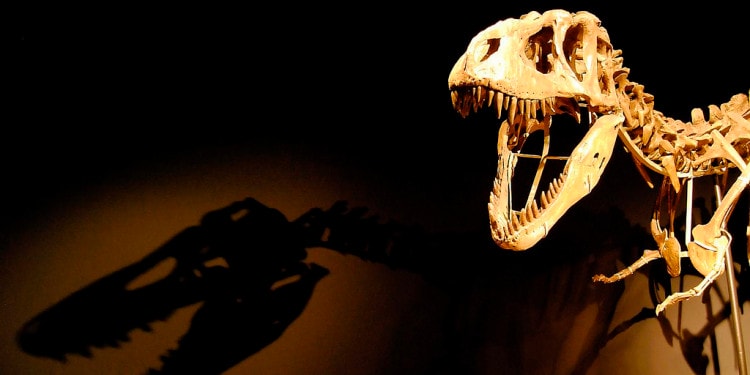In America, scientists who are thinking hard about the future have found an intellectual home in the Long Now Foundation. Founded some 20 years ago, this private foundation brings together people who are into “long thinking”, promoting a slower culture but of a very long duration, in the frame of some 10.000 years. To bring home the point, the present year 2015 is written: 02015 ! The Long Now Foundation uses five-digit dates, the extra zero is meant to solve the deca-millennium bug which it expects will come into effect in about 8,000 years…
The Foundation is promoting several projects and initiatives to foster thinking about the future. For example, the construction of a clock that could mark the time for 10.000 years using renewable energy, yet of a low economic value to avoid stealing. Such a clock, as they explain on their website, if sufficiently impressive and well-engineered, would “embody deep time for people. It should be charismatic to visit, interesting to think about, and famous enough to become iconic in the public discourse.” What the Long Now Foundation hopes is that it would do “for thinking about time what the photographs of Earth from space have done for thinking about the environment”. The monumental clock, designed by Danny Hillis, a polymath inventor and computer engineer, is presently under construction in California and Seattle while the mountain to house it in Texas is getting ready. Jeff Bezos’ team at Amazon have also created a new website at 10000YearClock.net with information for the public about the project as well as a public sign up page for learning about the eventual visiting opportunities there.
 In the photo: The Rosetta ( Top of the Rosetta Disk Container) -Photo credit to Rosetta Project.
In the photo: The Rosetta ( Top of the Rosetta Disk Container) -Photo credit to Rosetta Project.
Complementary to the clock is the Rosetta Project that explores very long-term archiving and is intended to serve as a means to focus attention on the problem of digital obsolescence and how to overcome it through creative archival storage methods. So far, it has collected over 100,000 pages of documents as well as language recordings, for over 2,500 languages. One major aim is to help conserve human languages that, under the pressure of globalization, are likely to be lost within the next hundred years. Also seminars have been organized focused on such topics as saving natural resources, increasing human life expectation etc. Also under consideration: projects to fight the disappearance every year of many living species and exploring the possibility of “resurrection” of important species recently extinct.
Actually, in the year 2000, there was a major breakthrough when French and Spanish scientists obtained the “resurrection” of a species of wild goat, the Pyrenean mountains Ibex that had been reported extinct three years before; they achieved this feat by transferring its DNA in the cell of another goat-related species.
 In the photo: Tasmanian tiger – Photo credit to: Tasmanian Archive and Heritage Office
In the photo: Tasmanian tiger – Photo credit to: Tasmanian Archive and Heritage Office
Also Australian scientists recently obtained the resurrection of a local frog (Gastric Brooding Frog) extinct since the ‘1980s. Other species that are candidates for resurrection are the Tasmanian tiger, extinct in the ‘1930s, and the “Passenger” pigeon, extinct in 1914. Some other scientists are discussing the resurrection of the Mammoth, extinct several thousand years ago, using its biological remains found in the Siberian permafrost.
What is required to bring a species back from extinction?
In fact, the biotechnology to be used needs four steps:
-
The recovery of an intact cell and DNA of the disappeared species;
-
The transfer of DNA recovered in a living cell of a related species currently available;
-
The induction of this cell division and cell multiplications;
-
The “in vitro” growth of the embryos or callus obtained.
The “resurrection” of plants species is also possible, as demonstrated by the successful revival of some seeds of a Siberian species, “Silene stenophilla”, recently found in a nest of squirrels, 38 meters below soil surface. Those seeds, dating back some 32.000 years (as determined by carbon dating) were found in the Siberian tundra, in Duvanni Yar location, close to the river Kolima. The “resurrected” plants germinated and found to bloom normally. This is explained by the fact that the seeds were left permanently for all this time at -7 degrees, buried in the soil, thus perfectly conserving the original DNA.
 In the photo: Silene stenophilla – Photo credits to Manuel Anastácio
In the photo: Silene stenophilla – Photo credits to Manuel Anastácio
This plant resurrection marks a big step forward: a few years ago, the most ancient plant that had been resurrected was a 2000 years-old date palm seed, found in the famous Masada fortress in Israel.
This opens up new vistas for research. Certainly, reviving with this technology old varieties of crops cultivated thousands of years ago could prove very valuable: it would be a unique way to recover some useful characters and types of cereals, horticultural and industrial species now lost with the modernization of agriculture.
would it also be possible to obtain the “resurrection” of humans that were once alive and are now long dead?
In fact, several thousand seeds of primitive types of wheat, barley, grain legumes etc. have recently been found in good shape in paleolithic villages in the desert areas of the Near East ( Iran, Pakistan, Palestine, Saudi Arabia etc.). The available genomic technologies now available could be used to recover genetic material cultivated at the beginning of human civilization.
Therefore, it should be very important to maintain in good conditions, through using, for example, super freezing technology, the ancient seeds found, which at present are unfortunately often conserved in Paleontological museums in conditions that do not allow good DNA conservation.
All this raises an important (and scary) question: would it also be possible to obtain the “resurrection” of humans that were once alive and are now long dead? Theoretically, the answer is yes. In fact, bio-engineering is on the road of eventually proposing the successful transfer of human DNA – obtained from other humans, either alive or dead – into an ovule deprived of its DNA and transferred into a female uterus for its development .
Certainly we should not be too surprised if one day soon some powerful or ultra-rich person puts the available technologies to personal use, producing a progeny with identical genetic (DNA) characteristics, in order to somehow survive after their death. The ethical questions such a procedure raises still await an answer and our current legal system is at present woefully ill-equipped to address such an eventuality. But in a world hurtling towards increasing income inequality, such an eventuality is no longer in the realm of science fiction.
Credits cover photo: Ruben ( Surfzone™) – Location: Cosmocaixa, Barcelona’s Science Museum.








